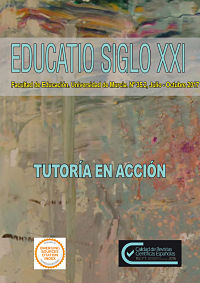Social and families variables associated with university drop-out
Abstract
Introduction. The purpose of this research
is to identify which social and family problems
affect students at university dropout
risk. In doing so, we will analyze the
relationships between university drop-out
and specific variables such as sex, age,
educational level and socio-economic
status of parents. Method. We use an expost-
facto methodology, with descriptive
and inferential design. The sample is 86
students from the Degree of Pedagogy
and Physical Activity and Sport at the University
of Seville. These are students who
began their studies in the academic year
2009/2010 and did not enrol again in this
degree in the following two years. For data
collection we developed an ad hoc questionnaire
with 51 items. For the analysis
we used descriptive and contrast techniques.
Results. The results show how the
existence of social and family problems
affect students causing their drop out or
temporary abandonment; at the same time,
we detected which personal, family, institutional
or social factors determine the
student’s decision to drop out. 72% of the
sample justified their drop-out in social
and family variables while 26% alluded to
demotivation and preference for another
degree or institution. Discussion. These
results coincide with previous research;
in this way we make a series of proposals
that can serve as a reflection for academic
leaders to improve success rates and efficiency
in current degrees and to promote
an inclusive university.
Downloads
-
Abstract2937
-
PDF (Español (España))1811
Original work publishes in this journal is subject to the following terms:
1. Murcia University Press (the publishing house) holds the copyright of the publishes work, and favours and allows their reutilization under the use license stated in point 2.
© Servicio de Publicaciones, Universidad de Murcia, 2015
2. Work is published in the electronic edition under a license (Creative Commons Reconocimiento-NoComercial-SinObraDerivada 4.0 España (legal text). They can be copied, used, disseminated, transmitted and publicly presented, as long as: i) authorship and original publication source is acknowledged (journal, publishing house and URL of the work); ii) are not used for commercial purposes; iii) the existence and specifications of this use license is stated.
3. Conditions for self-archive. Authors are allowed and encouraged to disseminate electronically the pre-pint (before review) and/or post-print (accepted for publication) versions of their work before their publication since that favours earlier circulation and dissemination resulting in an increased chance for the authors to be cited and for the work to reach a bigger share of the academic community. Colour: RoMEO: green.







